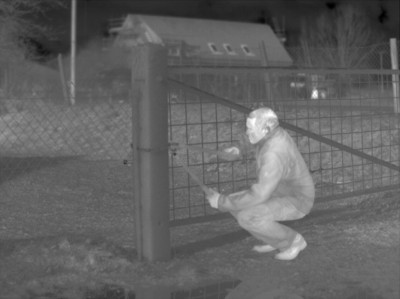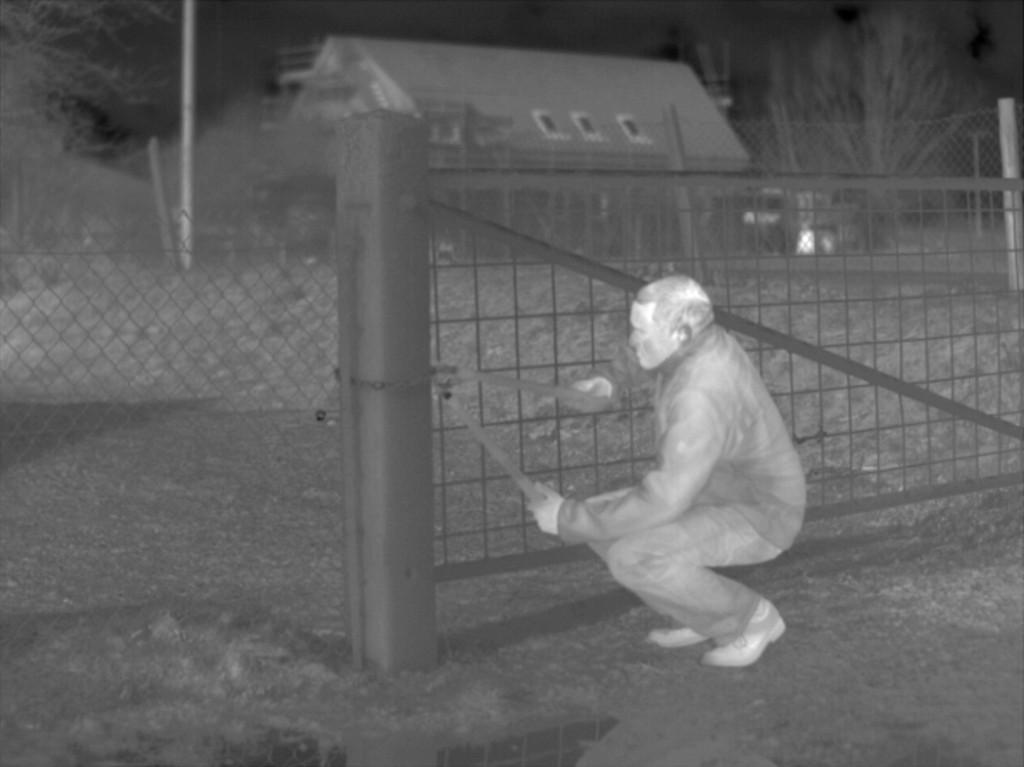
One of the most commonly overlooked technologies available to the prepared homeowner is thermal imaging. Many people are hooked on night vision devices, almost to the exclusion of anything else, yet few realize that a decent handheld thermal imager costs less than an equivalent pair of night vision goggles.
Maybe it’s the fact that thermal imaging hasn’t had quite the advertising dollars spent on it as night vision, or perhaps it’s just plain lesser known – whatever the situation may be, thermal imaging deserves a closer look.
Thermal imaging as a technology is relatively mature, and the military has used such systems for a couple of decades to great success. Known by the acronym FLIR, which stands for Forward Looking Infra Red, not to be confused with a prominent thermal imaging manufacturer of the same name (FLIR®), thermal imaging is essentially a technology that allows users to see the heat given off various objects – including people. Thermal imaging is responsible for some of the images we’ve seen on the nightly news – gray backgrounds with white humanoid figures moving around, whom inevitably are destroyed by some missile or bomb. There are a multitude of different thermal imaging technologies out there; some display a range of colors (from blues being coldest, to reds and yellows being hottest), but we really don’t want that capability, nor are we prepared to pay for it. What we really want is a simple and relatively inexpensive device that allows us to spot human heat signatures – white people on a gray background is just fine, thanks.
Why Thermal Imaging?
The main reason thermal imaging makes sense to consider, especially those with larger pieces of land, is that it allows your eye to cut through all the noise of what it sees and go right to the potential intruder, looter, thief or home invader hiding in the yard. Consider that human camouflage is an elementary matter. Using off-the-shelf military camouflage patterns, most anyone is able to disguise or conceal themselves in underbrush, tree lines and other vegetation. Even without camouflage, it’s relatively easy to hide from view on most properties by sticking to the shadows. The larger the property or land is, the easier it is to conceal yourself on that land.
How To Defend Yourself And Your Family Against The New Breed Of Lowlife Criminal Scum
Thermal imaging is relatively hard for your garden variety intruder to hide from, namely because we as humans are constantly hovering at 98 degree body temperatures, which stands out incredibly well from the surroundings. Consider that on a 60 degree day, most everything outside will be at ambient temperature, causing a human being’s heat to stand out quite nicely – and the beauty of it is that while there are thermal imaging countermeasures out there, they are not known to many people, and they are extremely hard to pull off when moving.
Thermal Imaging vs. Night Vision
Don’t get me wrong, night vision has a place in the home defense toolbox. It’s great for all-around night operations, in which you might need to see something other than just people. Making your way through a dense forest at night, for example, would be greatly aided by using night vision with an onboard illuminator. On the other hand, when you are focused on searching for potential incoming threats (whether people or animals) thermal imaging wins hands down, showing human beings as white hot humanoids on a gray background, regardless of what they are wearing, where they are hiding, or how stealthily they are approaching. A person’s heat signature remains with them whether low crawling, skulking behind a bush, or tiptoeing in the shadows, and thermal imagers see them all.
Also, a handheld thermal imaging monocular can be had for as low as the mid $1500 range, while a set of military grade night vision goggles will usually run $2500-$3000. If you have a large back yard with lots of vegetation, a quick scan with the thermal imager will reveal whether there are people back there or not. With a set of night vision goggles, you might still spot the intruder, but not if he lies perfectly still or is well-camouflaged. Again, for intrusion detection, thermal imaging is excellent.
Inevitably, some people will wonder about the effectiveness of thermal imagers in hot climates. For example, if it’s 98 degrees out, will that mean a person just blends in to the surroundings? The answer is no – thermal imagers work so well because the ground, trees and terrain are rarely if ever the exact same temperature as a human, even though the ambient temperature might be close. Additionally, a humanoid represents a compact collection of heat, rather than radiated heat from the ground, which is often pushed about by winds. Consider that most of the thermal imager videos you’ve seen on the nightly news showing terrorists being eliminated in far away lands with drones or helicopters are filmed in extremely hot climates. You can see the people just fine…
Thermal imagers do have some limitations, however. For starters, knowledgeable operators can defeat it with special thermal suits that contain their body heat, but you aren’t likely to face anyone with that technology. Also, thermal imagers are not x-ray vision; you will not be able to see people through walls or behind glass like in the movies. The same home insulation that keeps heat inside your home also blinds a thermal imager by not allowing it to see your heat.
Thermal imagers are light, available, portable, and easy to use even by novices. They are a great piece of kit to use as an intrusion detection system, but also for more mundane uses like camping, where you can use it to see into the darkness to find out what that rustling noise was. Thermal imagers make lots of sense and should be considered before night vision technology.
Sign up for Off The Grid News’ weekly email and stay informed about the issues important to you










